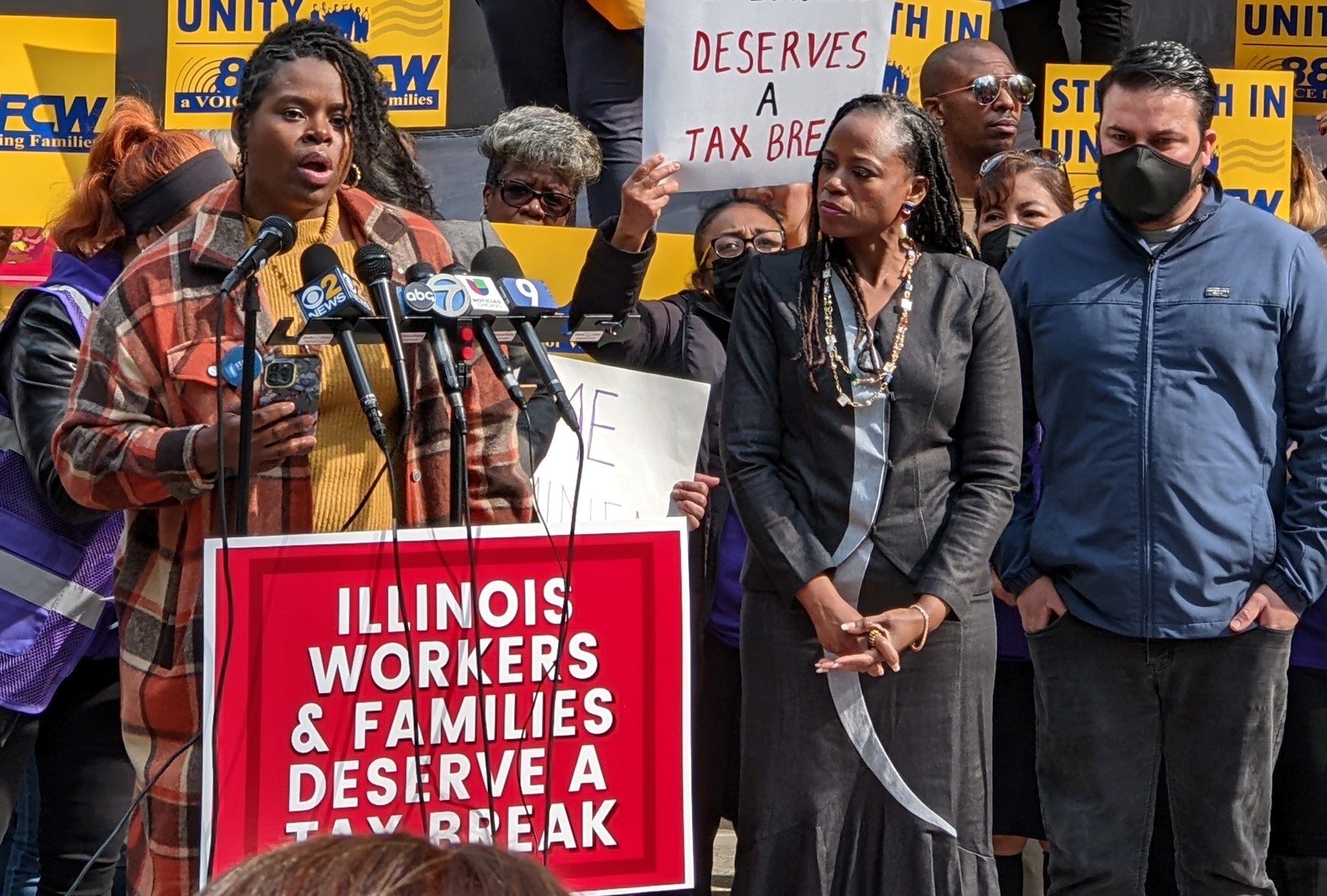
WHAT we CAN LEARN FROM ONE MOM’S ACTIVISM THAT CHANGED ILLINOIS STATE LAW
Ida nelson spearheaded what would become the Jett Hawkins anti-hair discrimination law. Now, she wants you to join her in fighting for students.
In August of 2021, Chicago mother Ida Nelson stood with her son, Jett Hawkins, as Illinois governor JB Pritzker signed the Jett Hawkins Anti-Hair Discrimination Act into law. A year before, Jett, age 4, was sent home from school with an ultimatum— change his hairstyle or face suspension. The hair in question? A freshly braided set of cornrows, a traditional hairstyle in the African American community. “That day, Jett had worn his hair in braids, something that made him feel proud and happy.” Ida told me.
Even though the Crown Anti-Hair Discrimination Act has been signed into law in 20 states since 2019, these racist policies exist both in writing and in practice in school districts around the country. Discretionary dress code policies have been especially wielded against Black and Indigenous students who are disciplined at alarming rates for wearing their hair in its natural state or culturally significant styles. This wasn’t the first time Ida had heard of these discriminatory policies at her son’s school—but she made sure it would be the last.

“I oftentimes get upset about the injustices that I see. But being upset is just a starting point. It’s a call to action for me to decide what I can do about it.”
The Jett Hawkins Bill was signed into law in 2021, protecting over two million Illinois students from facing learning disruption for wearing their natural hair and cultural hairstyles. But Ida’s work isn’t over. And now she is calling on parents around the country to follow her lead. “I know that my community is going to be changed for the better in my lifetime by me just doing these little things and getting other people to buy in and to do the little things with me. And that has a snowballing effect and can make big changes.”
With the repealing of policies of inclusion in schools across the country, in tandem with the rising passage of book bans and restrictions on teaching students about marginalized communities in America, many parents are faced with similar scenarios at their own schools. I sat down with Ida Nelson to shed light on her journey and the pathways other parents can take to change these policies and protect their children.
JY: Okay, so you get a call from the administration of Jett’s school telling you to change his hair or he’s getting suspended. How did you know what steps to take next to push back against this discrimination?
IN: I am a person that once I start thinking about something, I won’t let it go. I am also that person that whenever I see something wrong, I’m not going to go to the manager, I’m going to write corporate.
For me it’s important to really hone in on what the issue is. Why did I feel so upset hearing this? Because it was not just about hair. That was the surface problem, but it was the combination of all the things that we’re talking about. Like why is it that my four-year-old little Black boy’s hair is offensive and banned with zero tolerance? That’s teaching kids that how they show up is not acceptable, and that they must change that in order to fit in with their society. And we know that that’s not true.
If you’re constantly targeting Black children for behavioral things, messing with their mentality or their understanding of what makes them special and unique, you know, interrupting their confidence, then that disrupts what they believe that they’re able to do and it keeps perpetuating the cycle of poverty.
But it also was about me being methodical and strategic. I knew that this was bigger than a hairstyle instinctually, but I needed to figure out how to articulate what the actual problem was and not from just an emotional standpoint. So, I started doing my research and writing out the statistics for how many times Black children have their academics disrupted for their hair. I started collecting all of that information, then I started collecting information about other instances of Black children being targeted with academic disruption and being kicked out of school for these zero tolerance policies.
JY: And after all this researching, how did you know who to contact about your problem?
IN: So, I did start with the proper channels. I started with the school, and the principal and I requested to speak with the board. And then I worked my way to the alumni. You know, I found my allies. When I felt like I wasn’t being heard I went to social media.
Then I went to the media after I got folks to buy into the idea that this is a problem, and why it’s a problem. And then we started working on the law, like I started reaching out to legislators, and working on trying to get it started with my aldermen, my own senator, Trisha Van Pelt, state representatives. And I looked at precedents. The Crown Act was the precedent that I was able to run off of, showing that my issue was something that was against the law.
JY: As you’ve worked on getting the Jett Hawkins Act passed and now implementation, you’ve been forthcoming about your own background. Why is it important to you to talk about your personal story?
IN: That’s the thing about storytelling, you telling and sharing your story is going to empower and inspire somebody else. And that’s what we’re here to do. We’re here to empower and inspire.
Ida continues to spread positivity and have an impact on her community today, whether it be in policy implementation or using her ice cream business to get local parents and children involved in the community. She stands as a precedent for other parents who are facing similar issues in their own local communities. My key takeaways for how parents can learn from this conversation with Ida are:
- Be bold! Be the leader that you want to see. Someone has to step up to the plate, and there is no reason it can’t be you.
- Speak up! Leverage your story to your networks. Use social media, talk to people in your community, find some way to make noise about the issues you care about the most.
- Look for allies! There are people that you can find who already are doing the thing you’re trying to do or can help connect you with people who can help.
Whatever path you take, know that you, like Ida, can make a difference in the lives of your community.






I stand by anyone who wants to wear they’re hair in the style of their choice! We have a right to wear our crown in the way that makes us happy
We agree! Students should have the freedom to express themselves!
It’s not Government or Schools and anyone else business to say anything about this young boy hairstyle. It’s America freedom Stand & Speak Up Boldly
He’s a Beautiful young Boy, He should be proud of his heritage.
God Bless them
We agree, how students express themselves should be left to the student and family to decide! Thank you for reading!
I’m so proud for y’all!
Thank you for reading, Judy!